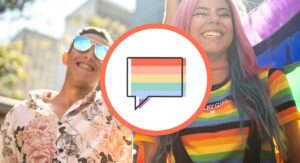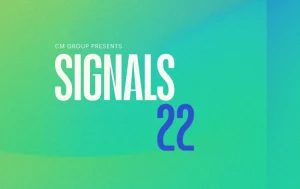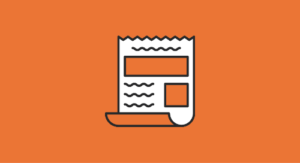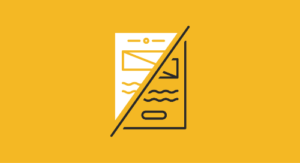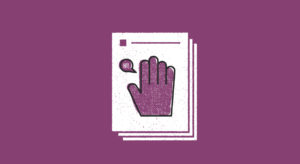What is the best image file size for email?

Designing an email campaign can be fun and creative, but it can often involve some technical issues, too. As you’re building your email marketing strategy, you may come across some highly specific questions, like how much text is too much text? What alignment looks best from a design perspective? What’s the best image size for email visuals?
Copy and design requirements may change depending on your brand and message, but there are a few universal elements to consider when choosing the best image file size for email, especially when you’re trying to get a campaign out the door.
Today we’ll discuss some email image size best practices, email image dimensions, and the best image formats for email newsletters.
Let’s get started!
How to choose the best image file size for email visuals in your campaign:
-
Start with a high-resolution image
-
Use the correct dimensions
-
Pick the right format for your newsletter
Start with a high-resolution image
When using images in email, implementing the right size is important. But before resizing your images, first, find an image that won’t lose its visual integrity after resizing. In other words, high-resolution images will simplify your process.
Decreasing the size of a high-res image is simple, and the diminished quality will often go unnoticed. On the other hand, trying to stretch a small image will often result in a pixelated visual. This can negatively impact your campaign and even delegitimize your brand.
High-res photos
There’s more to consider than finding the best image file size for email—you also want to find the best images for your campaign. But what kinds of images should you use? The answer to that is easy: high-resolution photos.
Luckily, high-resolution photos are easy to obtain and use. Depending on the quality of your phone or camera, you may be able to shoot photos yourself and simply upload them to your computer. This is a great option for marketers who are budgeting time and finances.
Stock photo sites are another affordable option for marketers. Sites like Pexels and Unsplash offer stock photos on a largely free basis, and there are a number of other sites that offer free, paid, and premium-priced photographs.
In the case of a niche campaign, you may consider hiring a photographer. Most professional photographers work with digital resources. Because of this, you’re virtually guaranteed to gain a huge selection of high-resolution photos taken especially for your brand. What’s more, you can continue to edit and use these photos as your company changes.
High-res graphics
If you’re looking for a more customized look, you may opt for graphics instead of photos. Illustrations and graphics can be extremely stylized, which may perfect for your brand.
If you’re design-oriented, you may choose to make your own graphics. For beginners, easy-to-use resources like Canva can be quick and seamless for designs. If you’re looking for professional design resources, consider well-regarded platforms like Adobe Illustrator, Sketch, or Procreate.
In the same way you might opt for a freelancer or stock site with photography, you also have these options when it comes to graphics. Dribbble and Behance are perfect places to find freelance designers.
Additionally, you can easily find free and paid stock illustrations online. Keep in mind, however, vectors (images that never lose quality) will most likely need to be converted into a different file format.
Paring down your image
Once you have your image or images, you’ll most likely need to downsize and maybe even convert the image into a different file format. As a general rule, photos will be converted into JPEGs, and graphics will be converted into PNGs. We’ll discuss these file formats more in-depth below. But first, let’s talk about dimensions.
Use the correct dimensions
Since you’re looking for the best image file size for email visuals, it’s important to remember an image’s size depends on a couple factors: aspect ratio and quality. Most images have varying aspect ratios—think portrait, landscape, square, etc.—so, keeping consistency in image dimensions helps your email look visually balanced. Do plenty of research about your email platform and the dimensions it allows. The larger the picture, the greater the chance of it being blocked by an email filter or firewall.
Dimensions for Emma mailing content: 480 x 480 or smaller
While 480 x 480 is the recommended dimension size for Emma mailing content, you can go smaller. If your image is not a square, for instance, your dimensions will probably look very different. Just make sure they are smaller than 480 x 480.
Dimensions for Emma header graphics: 600-700px x 100-200px
Header images can and should be slightly larger than subsequent images (the ones in the content portion of your email). While using Emma’s email editor, you’ll want to adjust your image size to have a maximum width of 600-700px and a maximum height of 100-200px.
Pick the right file format for your newsletter
Depending on the visuals you choose, your newsletter will most likely require a specific file format. The most universally accepted file types are JPEGs, PNGs, and GIFs.
JPEGs have the lowest quality of the three file types, but retain color when used. PNGs are higher quality images, and therefore may take up more space. And you’re probably all too familiar with GIFs. This file format allows for image and animation looping.
When to use JPEGs
While JPEGs are lower in quality than PNGs, they are highly compressed files, meaning they don’t take up much space. What’s more, JPEGs are “lossy,” which means they can display a wide selection of colors.
Because of this, JPEGs are usually a perfect choice for photographs. Photos often have countless colors, making JPEGs a natural choice for displaying them. Plus, when photos are converted to JPEG, any diminished image quality will go unnoticed by viewers.
By having a file that is both compressed and visually pleasing, emails will load faster and create a better experience for users.
When to use PNGs
While JPEGs are perfect for photos, they’re not an ideal choice for logos, graphics, or text. PNGs, on the other hand, provide a clear, crisp option for all three. Plus, if your logo or graphic has a transparent background, PNGs will allow you to use that image in your email.
Notice the checkered background in the PNG example above. This background indicates transparency, which is great for overlaying graphics and logos throughout your email. When overlaying, it’s very possible you’ll implement JPEGs and PNGs. You can see what this might look like in the examples below:
When to use GIFs
The GIF file format can be used for a variety of images because unlike JPEGs, GIFs retain image quality. GIFs are most commonly used for animated content, which can be a great addition to emails.
You can use a GIF if you want to show several images of products in succession, animate an illustration, or simply increase visual appeal. You can see the different uses for GIF files in the examples below, taken from Moo, Dropbox, and Adweek.
This example perfectly demonstrates how you can showcase your products, simply by using a GIF in your email. You may want to implement this marketing method during a sale or new release.
The above examples illustrate how you might simply include a gif to make your email more visually interesting. And as you can see in Dropbox’s email, animations can also supplement your brand’s identity or persona.
Wrap up
Hopefully, you can now choose the best image file size for email visuals during your campaigns. An image’s location (e.g. header or content) can affect size, so it’s essential to select the correct dimensions and pare down images accordingly.
There are many types of files out there, but JPEGs, PNGs, and GIFs are the most universally accepted files. These formats have image-specific uses, so carefully consider your images before converting.
As you can see, choosing an image goes far beyond size. The image you choose needs to be high-resolution, and above all, it needs to be specific to your brand and messaging, whether it’s a graphic or photograph. So, now that you know, what images will use?
Looking to learn more? Solve all of email’s mysteries with Emma.
MOST RECENT ARTICLES
Want to engage your audience and grow your brand? Try Emma's robust easy-to-use product today.

